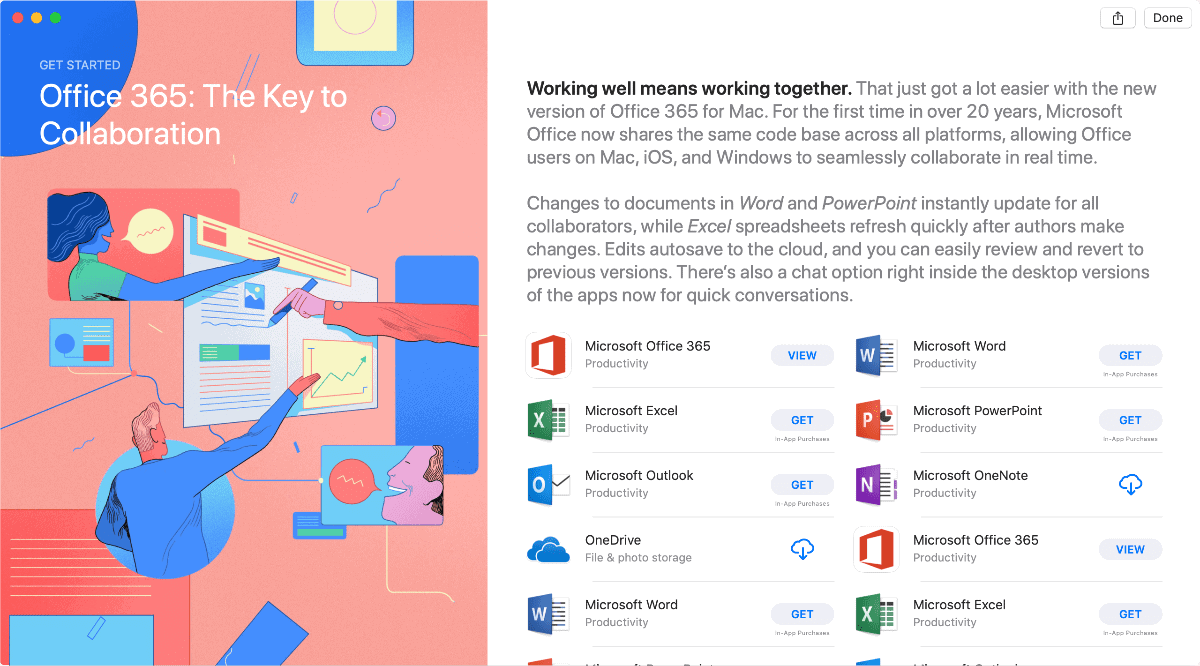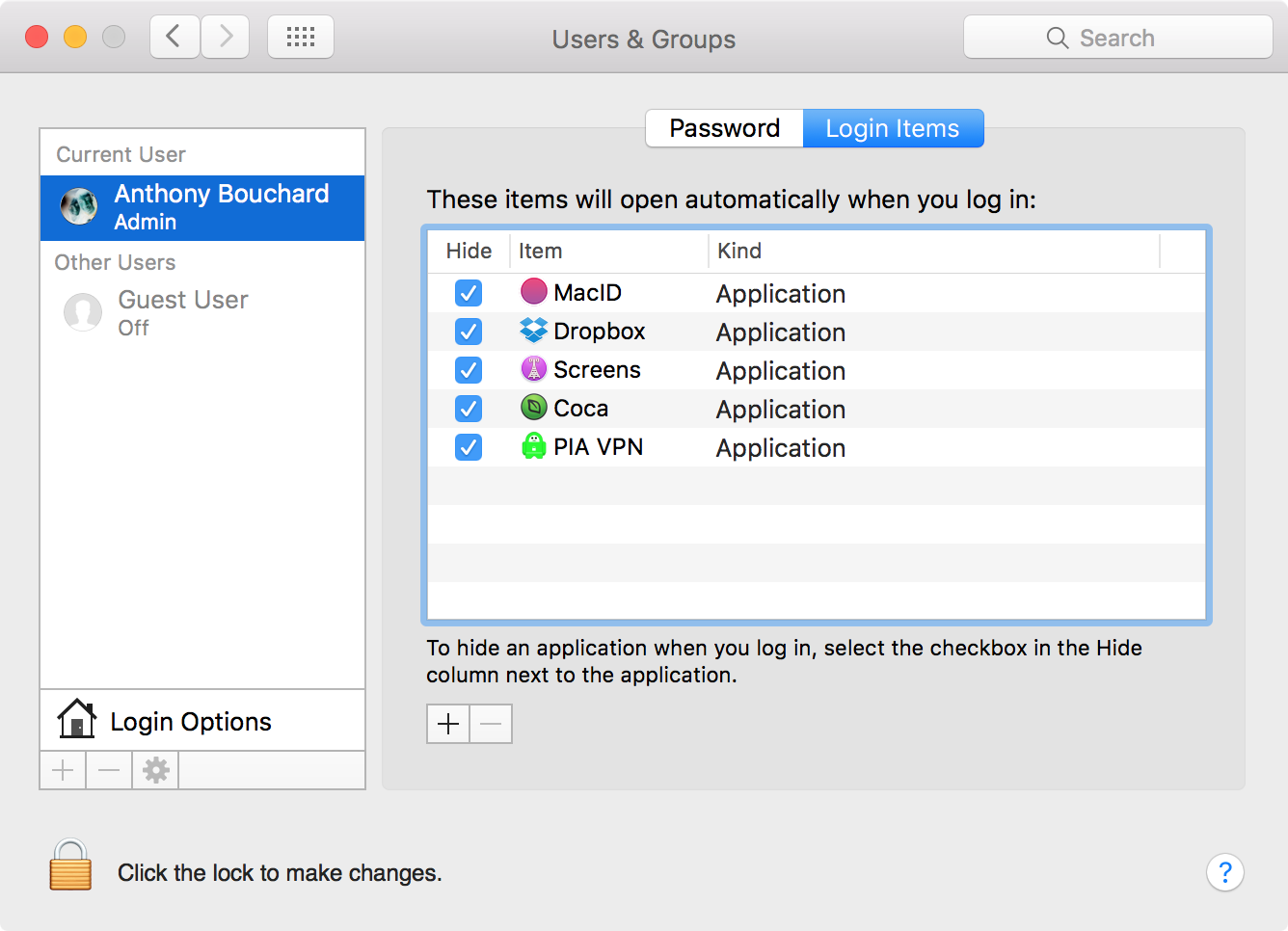May 17, 2019 There’s an easy way to remove programs from startup and get your Mac to load faster on launch. The fastest way to turn off startup items on Mac is an app like CleanMyMac X. Download CleanMyMac for free. Launch the app. Open Optimization tab. Click on Login items. From the list of apps, disable the ones you don’t need on startup.
- On the next screen, click on the current user account option in the side-bar menu and then click on the Login Items Tab (See image below). Next, click on the + button to add an application to the list of startup apps (See image above). On the next screen select the application that you would like to Launch at Startup and then click on the Add button, located in the bottom right corner.
- Delay Start works similarly to the Mac's own internal interface. Click the plus sign to add a program to the list. Change the time setting to indicate how long (in seconds) you want the apps to be.
- This means that a startup time of 10 seconds could now take 20 seconds or longer. Short of buying a new computer, you can improve on the boot time of your device by managing the apps that are launched automatically. If you’re a Mac user looking to manage their startup apps, then.
- Sep 30, 2019 These apps should make the time you spend on your Mac more pleasant and productive. And some of them might become so indispensable, you’ll wonder how you ever managed to get by without them. But no list of software is ever complete, so we invite you to share your favorite, must-have Mac apps in the comments.

Apps That Start On Mac Windows 10
To use any of these key combinations, press and hold the keys immediately after pressing the power button to turn on your Mac, or after your Mac begins to restart. Keep holding until the described behavior occurs.
- Command (⌘)-R: Start up from the built-in macOS Recovery system. Or use Option-Command-R or Shift-Option-Command-R to start up from macOS Recovery over the Internet. macOS Recovery installs different versions of macOS, depending on the key combination you use while starting up. If your Mac is using a firmware password, you're prompted to enter the password.
- Option (⌥) or Alt: Start up to Startup Manager, which allows you to choose other available startup disks or volumes. If your Mac is using a firmware password, you're prompted to enter the password.
- Option-Command-P-R:Reset NVRAM or PRAM. If your Mac is using a firmware password, it ignores this key combination or starts up from macOS Recovery.
- Shift (⇧): Start up in safe mode. Disabled when using a firmware password.
- D: Start up to the Apple Diagnostics utility. Or use Option-Dto start up to this utility over the Internet. Disabled when using a firmware password.
- N: Start up from a NetBoot server, if your Mac supports network startup volumes. To use the default boot image on the server, hold down Option-N instead. Disabled when using a firmware password.
- Command-S: Start up in single-user mode. Disabled in macOS Mojave or later, or when using a firmware password.
- T: Start up in target disk mode. Disabled when using a firmware password.
- Command-V: Start up in verbose mode. Disabled when using a firmware password.
- Eject (⏏) or F12 or mouse button or trackpad button: Eject removable media, such as an optical disc. Disabled when using a firmware password.
If a key combination doesn't work
If a key combination doesn't work at startup, one of these these solutions might help:
- Be sure to press and hold all keys in the combination together, not one at a time.
- Shut down your Mac. Then press the power button to turn on your Mac. Then press and hold the keys as your Mac starts up.
- Wait a few seconds before pressing the keys, to give your Mac more time to recognize the keyboard as it starts up. Some keyboards have a light that flashes briefly at startup, indicating that the keyboard is recognized and ready for use.
- If you're using a wireless keyboard, plug it into your Mac, if possible. Or use your built-in keyboard or a wired keyboard. If you're using a keyboard made for a PC, such as a keyboard with a Windows logo, try a keyboard made for Mac.
- If you're using Boot Camp to start up from Microsoft Windows, set Startup Disk preferences to start up from macOS instead. Then shut down or restart and try again.


Remember that some key combinations are disabled when your Mac is using a firmware password.
Learn more
Apps Start Automatically On Mac
- Learn what to do if your Mac doesn't turn on.
- Learn about Mac keyboard shortcuts that you can use after your Mac has started up.